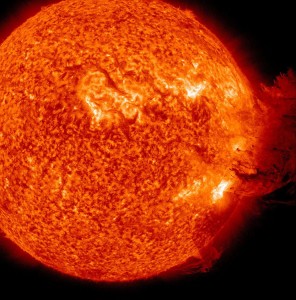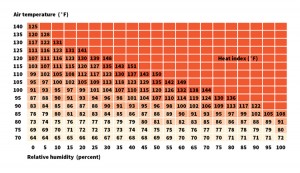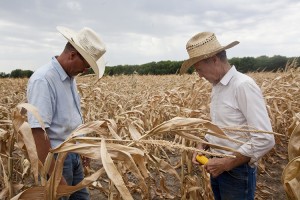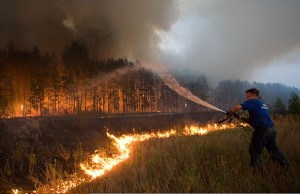The Stanley Cup comes to Las Vegas
Thursday, June 15th, 2023
Vegas Golden Knights right wing Mark Stone holds the Stanley Cup after defeating the Florida Panthers 9-3 in Game 5 of the National Hockey League Finals on June 13, 2023, in Las Vegas, Nevada. The Knights won the series 4-1.
Credit: © John Locher, AP Photo
The Vegas Golden Knights routed the Florida Panthers 9-3 yesterday, winning the best-of-seven Stanley Cup Finals, the National Hockey League’s championship, four games to one. The win caps the Golden Knights’ swift rise from expansion team to member of the upper echelons of the league.
The Golden Knights took an early two-games-to-none lead in the series. The Panthers won a come-from-behind overtime win in game three, but their star forward Matthew Tkachuk fractured his sternum during the contest and was not a major factor in the rest of the series.
With a 10-game point (goals plus assists) streak and 13 goals and 12 assists overall, forward Jonathan Marchessault won the Conn Smythe Trophy for the playoffs’ most valuable player. Marchessault, one of the six remaining players on Vegas’s roster from its inaugural season in 2017, defeated the team that had let him go. In fact, the Panthers traded Reilly Smith to Vegas so they would take Marchessault instead of defensemen Alex Petrovic and Mark Pysyk during the expansion draft. The French-Canadian burned his former team to the tune of four goals and four assists.
Marchessault’s partner in the withering Vegas offense was veteran center Jack Eichel. Eichel scored six goals and had 20 assists in the Golden Knight’s playoff run. After goaltender Laurent Brossoit was injured during the second round, backup Adin Hill helped guide Vegas through a grueling six-game barnburner against the Dallas Stars. The series featured three overtime games and two shutouts from Hill.
The Panthers were the Cinderella story of the Stanley Cup Playoffs. They snuck into the tournament with the fewest standings points (92, with two points awarded per win and one point awarded for each overtime loss) of any playoff team. They were paired against the mighty Boston Bruins in the first round. Odds-on favorites to win the Cup, the Bruins had set the NHL records for wins (65 in an 82-game season) and standings points (135). But Florida stunned the hockey world by knocking off Boston in seven games. The upstart Panthers then dispatched the formidable Toronto Maple Leafs in five games and the Carolina Hurricanes in four to reach the Finals.
The Vegas Golden Knights have a short history filled with success. In 2017, the NHL held an expansion draft that allowed the Golden Knights to pick players from other teams. Responding to past expansion teams in the NHL and other sports being mired in mediocrity for years, the league reduced the number of players each team could “protect” from being picked by the new team. Vegas took advantage of the new draft rules and had one of the best inaugural seasons by an expansion franchise in any major professional sport. They finished first in the Pacific Division and made it to the Stanley Cup Finals, but lost to the Washington Capitals. Overall, Vegas has made the playoffs in five of its first six seasons.
Until 2017, Las Vegas had no major professional sports teams. Due to relaxing attitudes towards sports betting and a booming population, that situation quickly changed. Now, the city has a championship NHL team and a National Football League (NFL) team (the Raiders, who moved from Oakland in 2020). Furthermore, on the day the Knights won the Cup, the Nevada state senate passed a bill to fund $380 million towards building a Major-League-Baseball-caliber ballpark on the Las Vegas Strip. The legislative approval was seen as the last major hurdle for the Athletics, currently of Oakland, to move to the state.
With many of its star players signed on for next year, the Golden Knights will remain the bright center of the newly-formed Vegas sports solar system.









